Ocean Art: Paintings of Amazing Sea Creatures

Lily Simonson, Don't Judge the Tubeworms, 2007, Oil on canvas, 60x84 inches.

Giant tubeworms, Riftiapachyptila, originally discovered at the Galápagos Rift in 1977. Among the first known creatures to subsist off of methane and sulfur hydrothermal vents, they become emblems of art and science's shared passion for exploration and discovery.
Lily Simonson, Biodiversity Bacchanal, 2011, Oil on canvas, 22x38 inches.
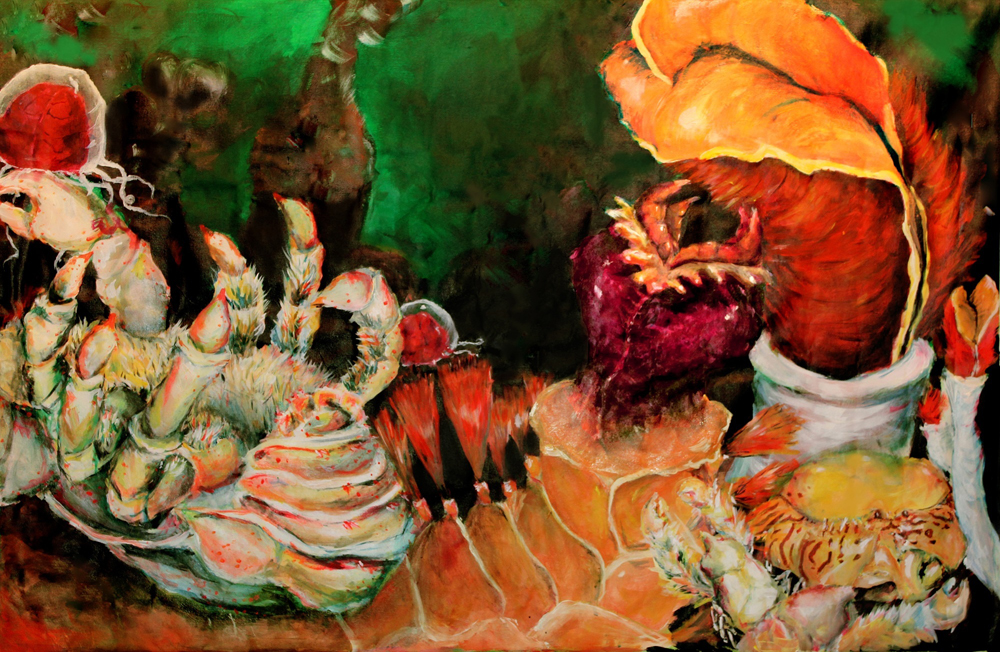
Created at the 2011 World Conference on Marine Biodiversity, this painting aims to capture the themes of the conference by featuring various fauna from a range of ecosystems. Clockwise from upper left: Red paper lantern jelly Pandearubra, inhabiting areas of the North Pacific, North Atlantic and Southern Ocean; currently undescribed species of yeti crab found at a newly-discovered hydrothermal vent in the Southern Ocean; currently undescribed polychaete worm, nicknamed Jaws; Kiwapuravida, the newly-described species of yeti crab discovered by Andrew Thurber at deep sea cold seeps off the coast of Costa Rica; the shy crab, Calappaflammea, found on sand bottoms along the Atlantic coast of North America; the Giant tubeworm Riftiapachyptila, initially discovered on the first-ever exploration of a hydrothermal vent.
Lily Simonson. Clockwise from left: Yearning Yeti Crabs, 2007, Oil on canvas, 96x72 inches; Rapture of the Yeti Crab, 2008, Oil on panel, 32x48 inches; Yeti Crab Embrace, 2010, Oil on canvas, 20x24 inches.
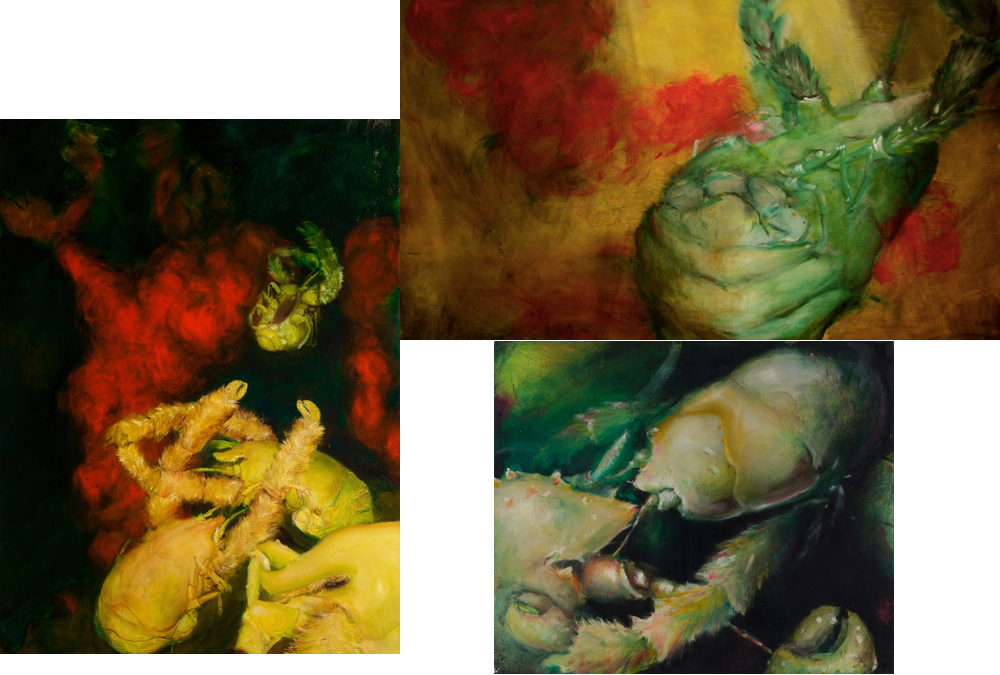
These paintings of Kiwa hirsute, the yeti crab discovered at a hydrothermal vent on the Easter Island Microplate, are imbued with romantic narratives, with the subjects' elongated furry pincers reaching outward in an anthropomorphized gesture of longing. The exaggerated light sources reference both the illumination of research vessels in the deep sea, as well as divine light sources in Medieval and Renaissance painting, infusing the crab with spiritual symbolism.
Lily Simonson, Ocean Realms (For the Census of Marine Life), 2010, Oil on canvas, 20x16 inches.

The Census of Marine Life divided the ocean into six realms to organize their global investigation. This painting honors the decade of discovery and exploration by highlighting one creature from each of these six ocean realms. The yeti crab, Kiwa hirsute, represents Active Geology; Laternulaelliptica, a type of Antarctic clam, represents Ice Oceans; the Peridinium microbes represent Microscopic Ocean; the American lobster represents Near Shores; the sea cucumber species Psychropoteslongicauda represents Hidden Boundaries; the Dumbo octopus represents Central Waters.
Giant isopod (bathynomus)
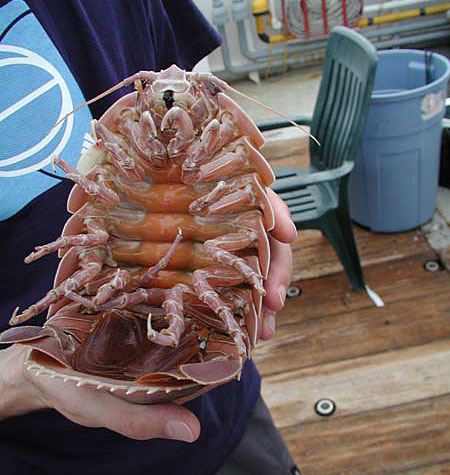
The underside of a giant isopod.
Vent-dwelling spider crabs (Turroptisnetricula)
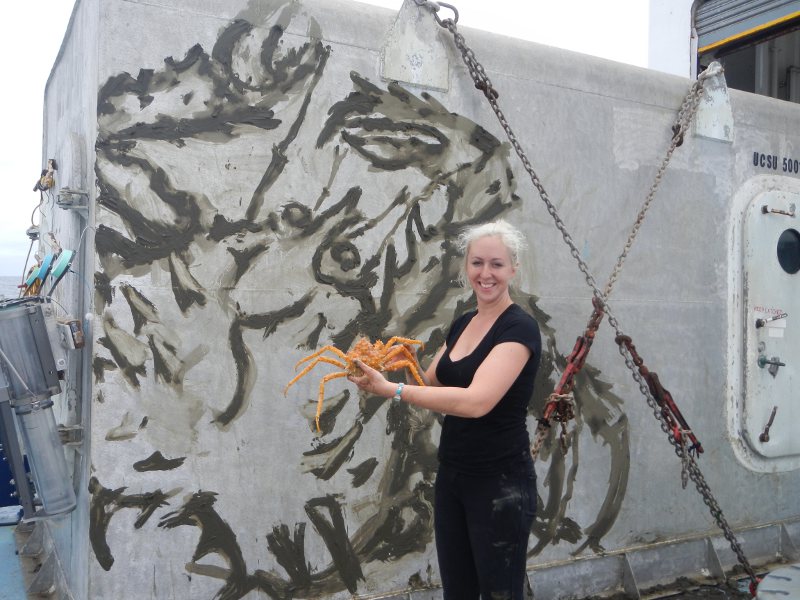
Simonson poses with her freshly collected spider crab muse and the resulting sediment mural.
Giant Tubeworms (riftia)
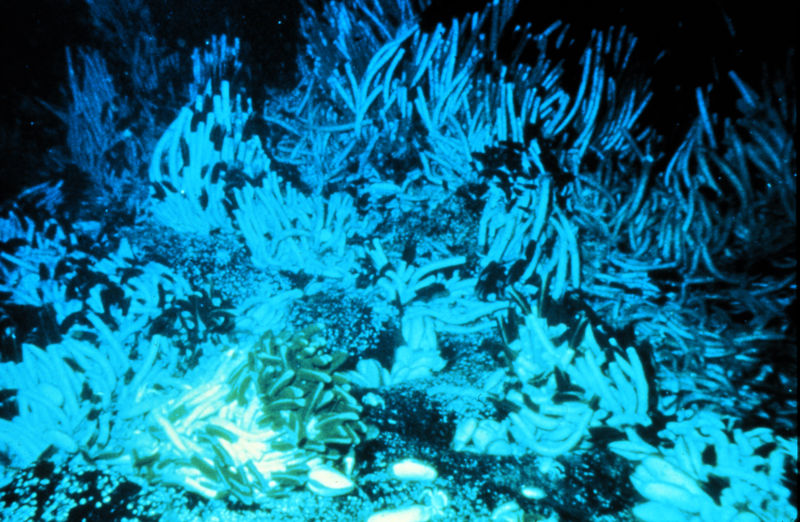
Hydrothermal vent tubeworms get energy from bacteria that live in their plumes.
Get the world’s most fascinating discoveries delivered straight to your inbox.


